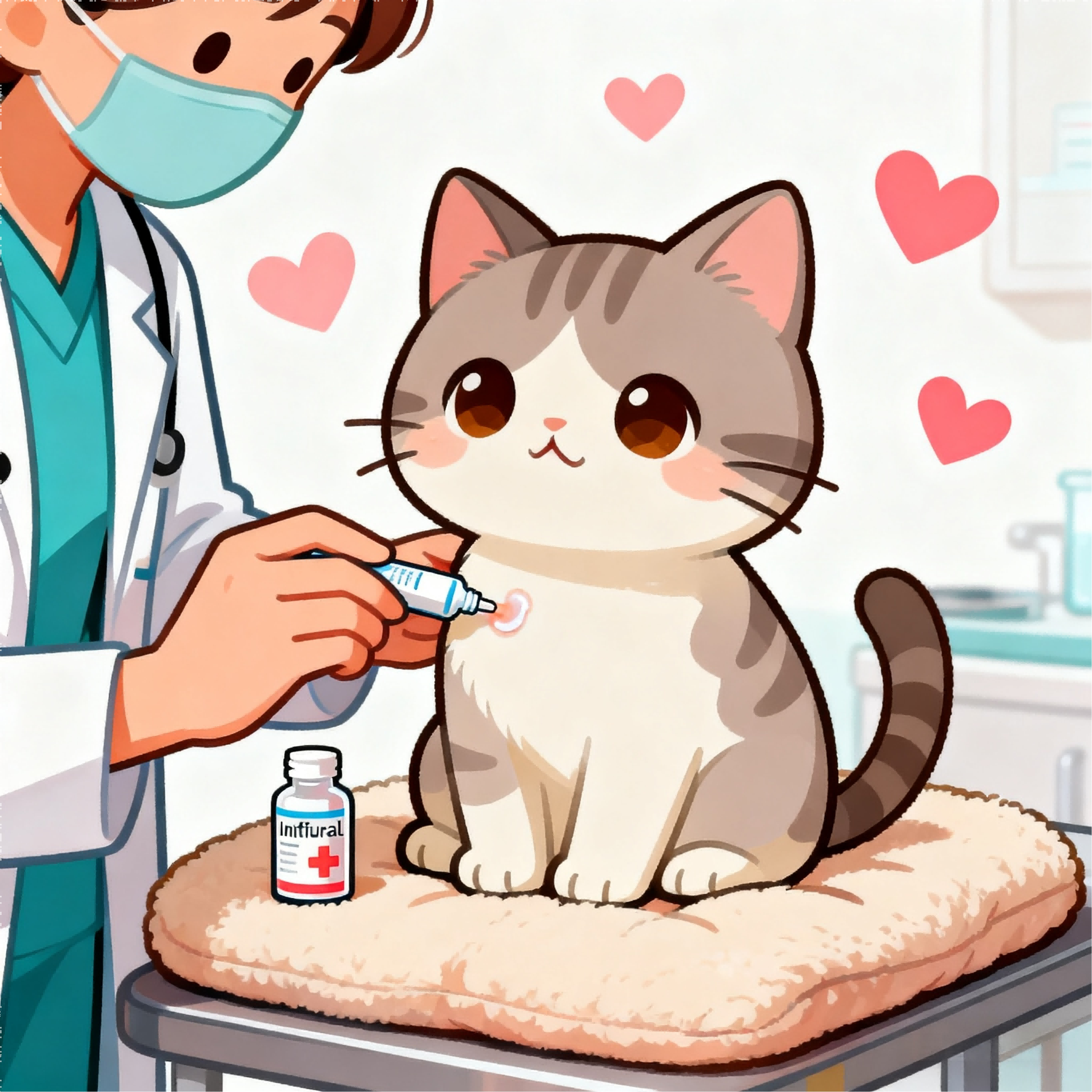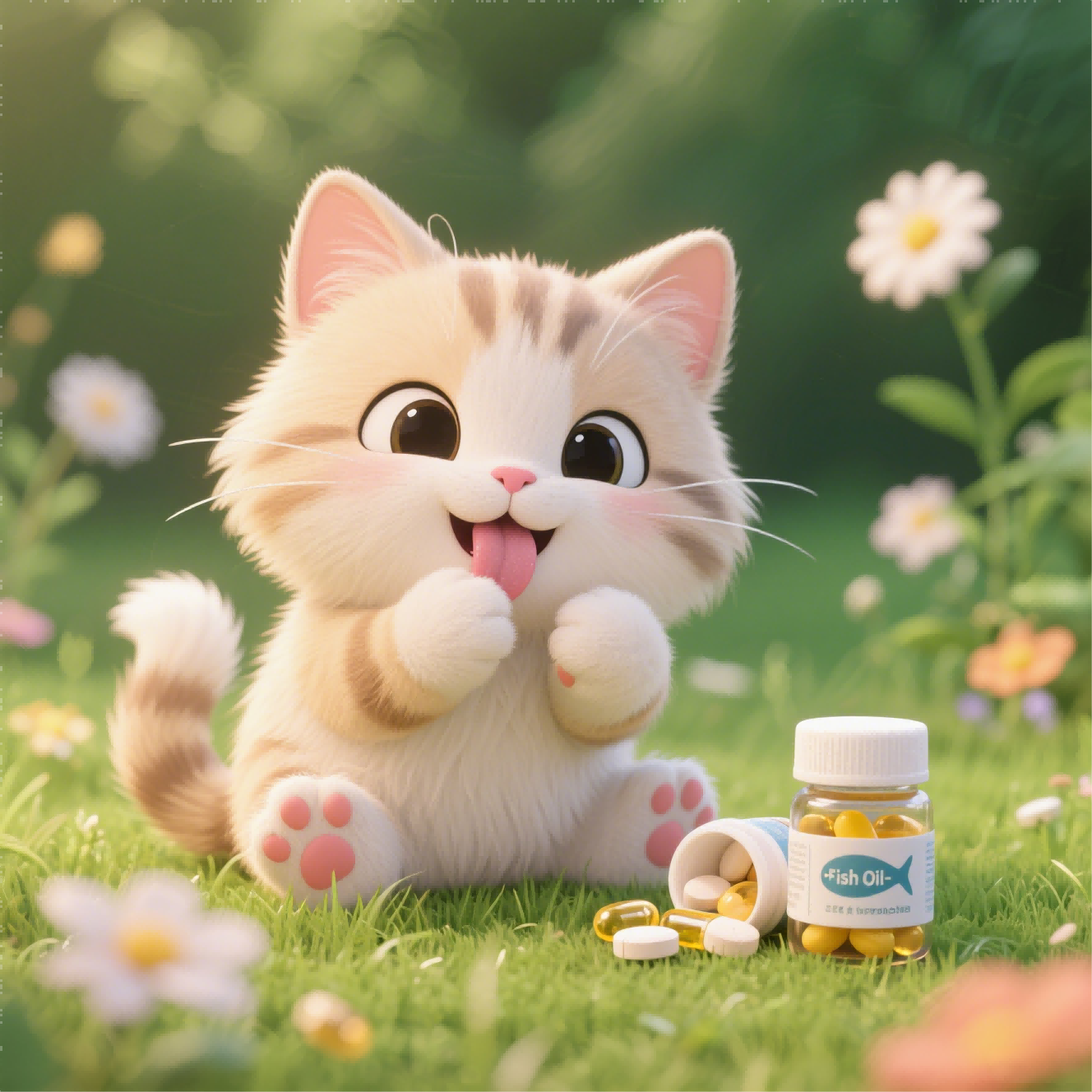

Oct. 24, 2025
Cat ringworm is one of the most common fungal skin infections affecting felines, caused by dermatophytes—microscopic fungi that feed on the keratin in a cat’s skin, hair, and nails. Contrary to its name, it has nothing to do with worms; the “ring” refers to the circular, raised lesions it often creates. This highly contagious condition can spread to other pets (like dogs) and even humans, making early recognition and intervention critical for both your cat’s well-being and household health. Let’s break down the key symptoms of a cat ringworm infection, why prompt veterinary care matters, and how proactive nutrition can support your cat’s skin and coat health long-term.

Key Symptoms of Cat Ringworm Infection: What to Watch For
Being able to spot the signs of ringworm early can help you get your cat treatment faster, reducing discomfort and stopping the spread. Here are the most common symptoms to monitor:
The most telltale sign of ringworm is localized, often round hair loss (hence the “ring” in the name). These bald patches typically start small and may expand over time, with the hair around the edges sometimes appearing broken or stubbly. They’re commonly found on the head, ears, legs, and paws, but can appear anywhere on the body. In some cases, the hair loss may be irregular rather than perfectly circular, especially in long-haired cats, making it easier to miss at first glance.
Infected areas often have dry, brittle fur that feels rough to the touch, as the fungus damages the hair shaft. Beneath the sparse or missing hair, you may notice erythema—red, inflamed skin. This redness is a reaction to the fungus, which irritates the skin’s outer layer and triggers inflammation.
Over time, chronic inflammation from ringworm can lead to hyperpigmentation, where the affected skin becomes darker than the surrounding area. This discoloration is more common in cats with lighter fur and may persist even after the infection is treated, though it often fades gradually with proper care.
While not all cats with ringworm itch, many do. The fungal infection irritates the skin, causing your cat to scratch, lick, or bite at the affected areas. Excessive scratching can worsen skin damage, break the skin barrier, and create openings for secondary infections—making it even more important to address the root cause.
Scratching or skin damage from ringworm can allow bacteria (like Staphylococcus) to enter the skin, leading to secondary bacterial infections. These infections often amplify symptoms: the skin may become more red, swollen, or painful, and your cat may seem more uncomfortable or lethargic.
As the infection progresses, you may notice small, raised bumps called papules or pus-filled blisters known as pustules on the affected skin. The damaged skin may also ooze clear or yellowish fluid, which dries to form scales or crusts. These crusts can trap bacteria, leading to further festering and making the infection harder to treat without veterinary intervention.
What to Do If Your Cat Shows These Symptoms
If you notice any of the above signs, contact your veterinarian immediately. Ringworm can be tricky to diagnose—your vet may use a combination of tests, including a Wood’s lamp exam (some dermatophytes glow under UV light), skin scrapings, or fungal cultures, to confirm the infection. Treatment typically involves antifungal medications (topical creams, sprays, or oral tablets like terbinafine), along with thorough cleaning of your home to eliminate fungal spores (which can survive on surfaces for months). With consistent treatment and proper hygiene, most cats make a full recovery within 4–8 weeks.

Nurturing Healthy Skin and Coats: Prevention Through Nutrition
While ringworm is treatable, prevention is always better than cure—and a key part of prevention is supporting your cat’s skin and coat health from the inside out. A balanced diet rich in essential vitamins, minerals, and fatty acids helps strengthen the skin barrier, making it harder for fungi and bacteria to take hold.
Our Health Coat Tablets are formulated to provide targeted support for feline skin and coat health. Packed with vitamins (like biotin and vitamin E), minerals (zinc), and amino acids, they help promote strong, shiny fur, reduce dryness and brittleness, and support the skin’s natural defense against irritants. Pair them with our Vic Fish Oil, which is high in omega-3 fatty acids (EPA and DHA)—powerful nutrients that reduce inflammation, soothe sensitive skin, and enhance coat luster. Together, these supplements help keep your cat’s skin healthy and their coat resilient—providing a solid foundation for long-term wellness.

Caring for a cat with ringworm can be challenging, but with early detection, veterinary care, and proactive nutrition, you can help your feline friend recover quickly and stay healthy. Remember: a healthy coat starts from within—invest in their nutrition, and you’ll be rewarded with a happier, more resilient pet.